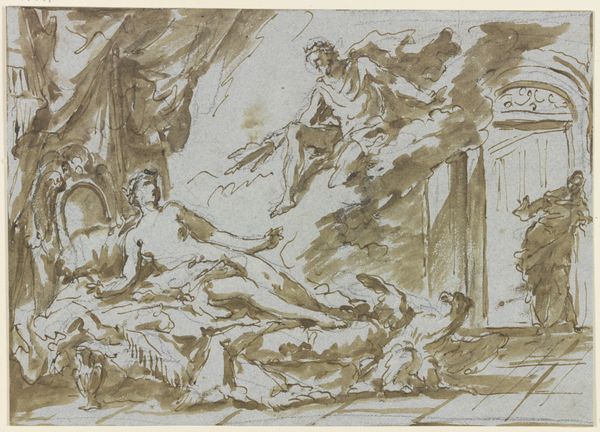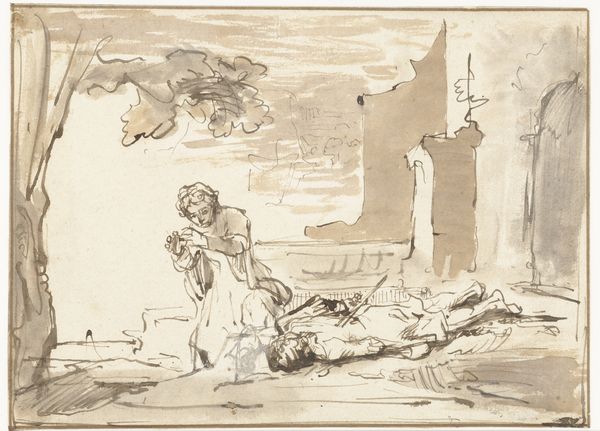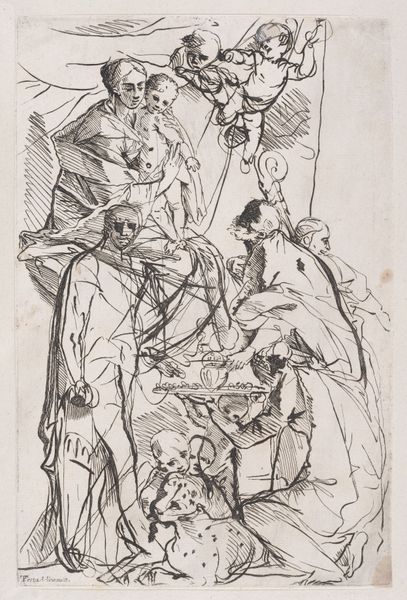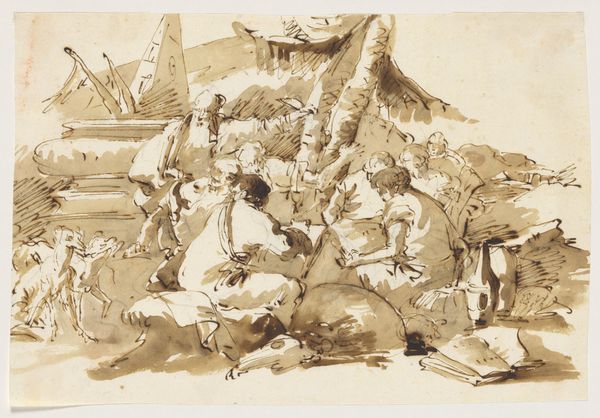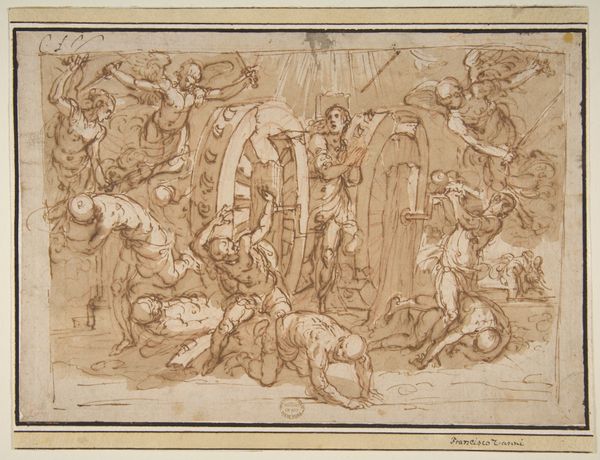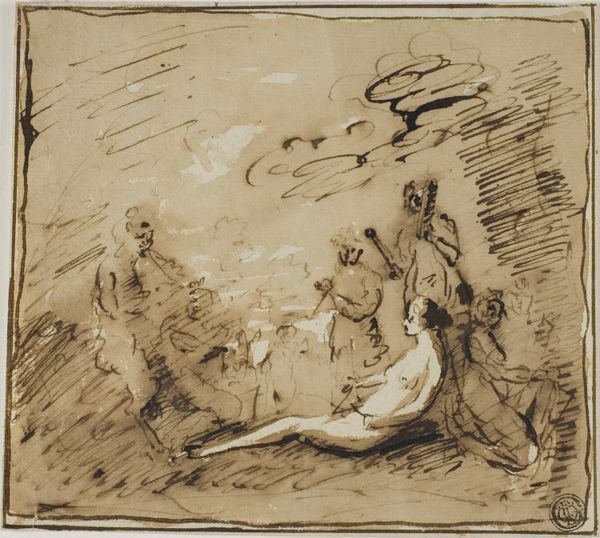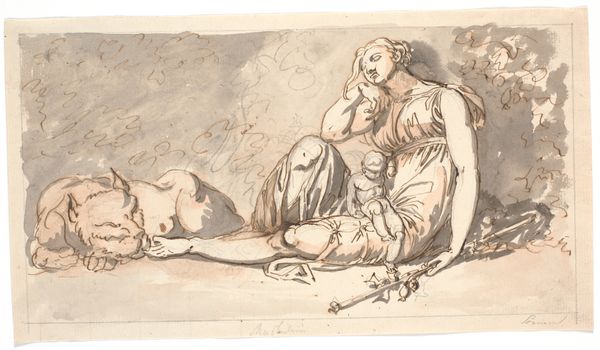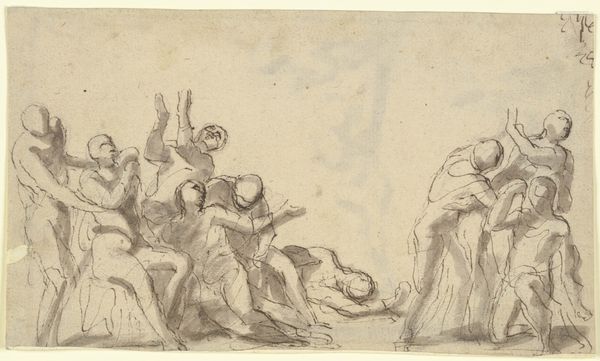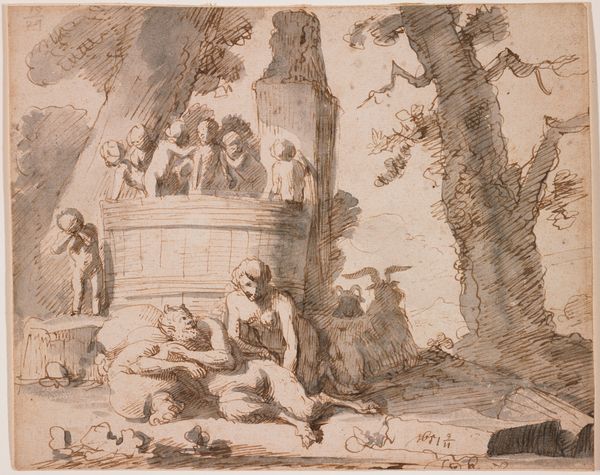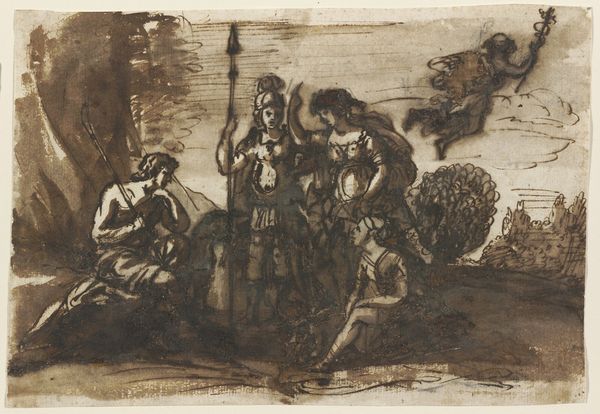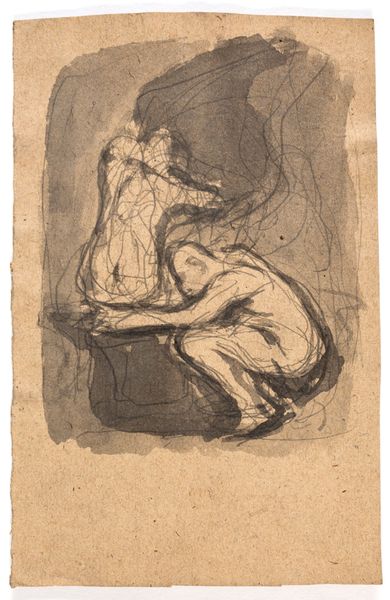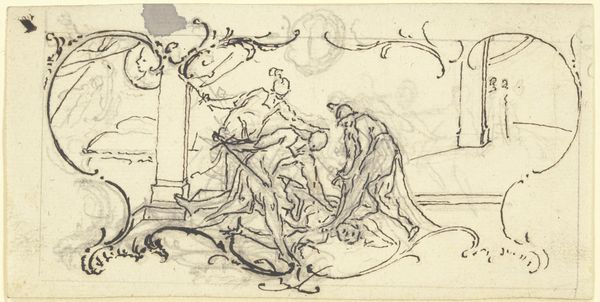
To gamle nøgne mænd liggende ved foden af en støtte, på hvilken en kølle er ophængt 1743 - 1809
0:00
0:00
drawing, paper, ink
#
portrait
#
drawing
#
ink painting
#
classical-realism
#
figuration
#
paper
#
ink
#
genre-painting
#
history-painting
#
academic-art
Dimensions: 109 mm (height) x 161 mm (width) (bladmaal)
Curator: Here we have "Two Old Nude Men Lying at the Foot of a Support, on Which a Club is Suspended," an ink drawing on paper by Nicolai Abildgaard, dating from 1743 to 1809. What's your immediate impression? Editor: Bleak. There's something deeply melancholic in those slumped figures, almost as if the weight of history is bearing down on them. It feels raw, unfinished—more of a lament than a celebration. Curator: That rawness, I think, speaks to Abildgaard's process. He was known for exploring grand themes—history, mythology—but always with this very personal lens. The academic setting demanded heroic portrayals. However, I believe the artist saw his work as something far deeper. Editor: Yes, and context is critical. Considering Abildgaard lived through a period of immense upheaval – the Enlightenment, the rise of nationalism, revolutions brewing – this image challenges the status quo. I mean, what kind of hero lays about looking defeated? Where is the triumph? Curator: Perhaps the triumph is simply survival? There's an interesting duality here, don't you think? The classical form – the nude figures, the architectural fragment – juxtaposed with this very human, very vulnerable depiction of aging and perhaps disillusionment. Editor: I’d say disillusionment is spot on. Also, the club suspended above seems to hang like the Sword of Damocles. Abildgaard challenges the prevailing ideas of progress and empire in his works, suggesting these ideologies come at great personal expense. Curator: Absolutely. Abildgaard consistently pushed the boundaries, using classical aesthetics to house complex emotions, offering an enduring look into human frailty even amid eras striving for order. Editor: Precisely. It also provides critical visual literacy for us today, suggesting even historical images, particularly those lauded as timeless masterpieces, are actually mirrors reflecting socio-political turmoil. The weight of history you spoke of is still very much present, only in our case we now face the burdens of generations. Curator: A fitting reminder that looking back often tells us just as much about the present. Editor: Agreed, a testament to the timeless relevance of visual deconstruction.
Comments
No comments
Be the first to comment and join the conversation on the ultimate creative platform.

